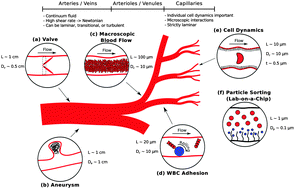Computational fluid dynamics in the microcirculation and microfluidics: what role can the lattice Boltzmann method play?
Abstract
Patient-specific simulations, efficient parametric analyses, and the study of complex processes that are otherwise experimentally intractable are facilitated through the use of Computational Fluid Dynamics (CFD) to study biological flows. This review discusses various CFD methodologies that have been applied across different biological scales, from cell to organ level. Through this discussion the lattice Boltzmann method (LBM) is highlighted as an emerging technique capable of efficiently simulating fluid problems across the midrange of scales; providing a practical analytical tool compared to methods more attuned to the extremities of scale. Furthermore, the merits of the LBM are highlighted through examples of previous applications and suggestions for future research are made. The review focusses on applications in the midrange bracket, such as cell–cell interactions, the microcirculation, and microfluidic devices; wherein the inherent mesoscale nature of the LBM renders it well suited to the incorporation of fluid–structure interaction effects, molecular/particle interactions and interfacial dynamics. The review demonstrates that the LBM has the potential to become a valuable tool across a range of emerging areas in bio-CFD, such as understanding and predicting disease, designing lab-on-a-chip devices, and elucidating complex biological processes.



 Please wait while we load your content...
Please wait while we load your content...